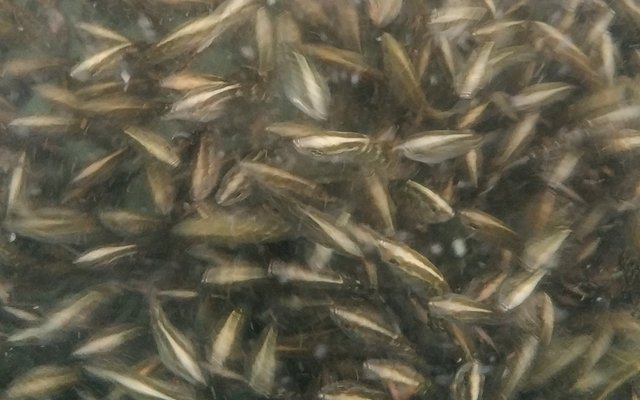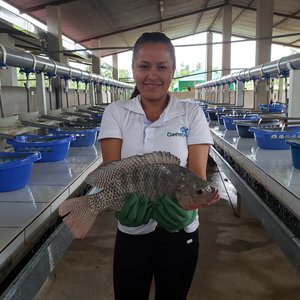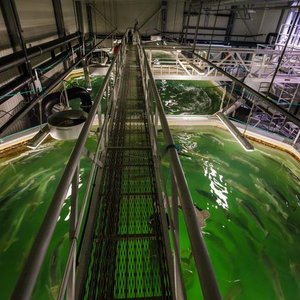Breeding programs for barramundi (Lates calcarifer) are impeded by the lack of control over the sexual development of broodstock. As a protandrous hermaphrodite, barramundi initially sexually mature as male at 2-3 years (2-4 kg body weight; BW), before changing sex to female at 4-6 years (>6-8 kg BW). Recently, precocious female barramundi have been generated using a single intramuscular estrogen implant, providing the potential to speed up the sex change process and implement same-age mating of male and female broodfish. However, the functional maturation of hormonally-induced precocious females and their ability to spawn and produce viable progeny remains untested.
Researchers from James Cook University hormonally induced to sex change male barramundi (~2.2 kg BW, 57.8 cm total length; TL) using an estrogen implant. The precocious female barramundi were cannulated at 6 (T1), 8 (T2), 10 (T3), 11.5 (T4) and 13 (T5) months after sex change, with oocytes measured and staged to determine reproductive condition. At T3, four females (~4.2 kg BW, 67.8 cm TL) with oocytes >350 μm in size were transferred to a spawning tank along with four males to assess their spawning performances. Mass spawning events were induced at T3, T4 and T5, and eggs released on the first and second spawning nights were collected to determine rates of fertilization, hatching and larval survival at 24 and 48 h post-hatch.
At each cannulation event (T1-T5), several precocious females were confirmed to have mature oocytes and were considered ready for induced spawning. Conversely, in some individuals, only immature oocytes were during each cannulation event. The four precocious females induced to spawn generated large numbers of eggs, with 7.7 million (T3), 10.9 million (T4) and 9.1 million (T5) eggs obtained across the two nights of each mass spawning event. Fertilization of oocytes was not observed at T3 and was likely due to male inactivity. Spawning performance improved considerably for T4 and T5 spawns, with the highest fertilization rate (64%) and hatching rate (72%) observed during T5 - Night 1.
Furthermore, larval survival at 24 and 48 h after hatching was 99% and 94%, respectively. Total larval production across both nights of the T5 spawn exceeded 3 million individuals. Spawning performances of precocious females were comparable to routine commercial stocks of large females (8-15 kg), and confirmed that precociously induced female barramundi can produce the quantity of seedstock required in existing selective breeding programs. Researchers said that further research examining the factors involved in promoting oocyte growth and maturation is needed to enhance the rate at which mature precocious females are available for spawning.
Check out the study here.













